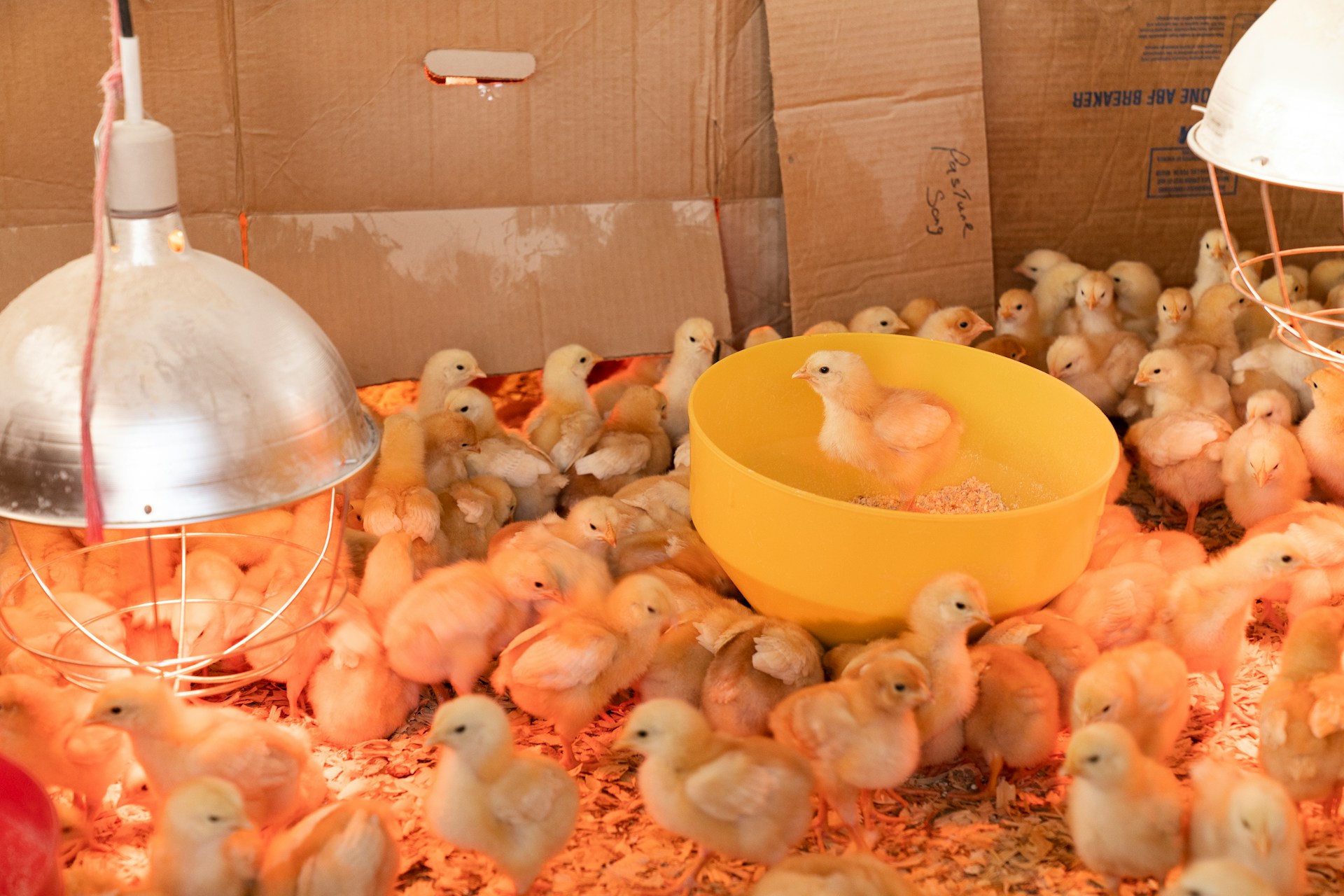Uniformity of performance in broilers
Broiler business demands good results for good performance, therefore when measuring the success of a broiler business, the following typical performance parameters should be taken into serious consideration:
- Market weight
- Days to market
- Mortality
- Feed conversion ratio (FCR)
- Profit per kilogram (after feed and chick costs)
These are the key performance indicators for how the flock performed, and they give useful information for a farmer to benchmark how the business performed compared to standards, previous flocks, and sometimes with neighbours. That is why it is important to update records on everyday activities during production.
Regular broiler monitoring progress during production is a great way to ensure success and gives the opportunity to make informed business decisions when necessary. Periodical (preferably weekly) weighing of at least 10% of the total flock is the most typical practice for within-flock monitoring. However, this method only provides an average weight.
One of the most important management tools to use as parameter is uniformity, also known as the coefficient of variation, which describes the quality of the brooding and growing process. Uniformity in broilers is important because it determines the range of body weight and for instance breast meat yields delivered at the processing line.
A high degree of uniformity means that the majority of the birds are in a very small range of body weights, and there is not a lot of difference between the biggest and the smallest birds.
Uniformity is calculated as a percentage of birds that are within +/- 10% of the average. The larger the number, the more uniform the flock.
The Coefficient of Variation (CV) is calculated as the standard deviation divided by the average. In the case of the CV, the larger the number, the less uniform the flock.
What are some of the causes of poor uniformity?
Brooding management can provide a good or bad starting point to a chick’s life. Most of uniformity problems occur during brooding and therefore favourable conditions are extremely important during this period.
The following key broiler management factors affect uniformity:
Feed and water: It is essential to have enough feed and water before the arrival of chicks. Feed should be in feeding pans, supplemental feeding trays and on paper covering at least 80% of the brooding area.
Temperature: Chicks’ bodies cannot regulate their own temperature, meaning their body temperature is dependent on the environmental conditions. Brooding period is always very crucial, especially in winter. Before the arrival of chicks, preheating of sheds is very important. A chilled bird will need to use energy to maintain homeostasis rather than for growth and development. Depending on the weather, area, type of construction, insulation status and other factors, the pre-warming should be started from 24 to 72 hours before arrival of chicks at the farm. Before placement of the chicks the best floor temperature is key to a good start and good uniformity.
Disease: Different types of enteric and other diseases can easily disturb the flock resulting in severe economic losses. FCR is badly affected by unevenness in a flock and the result is less profitability.
Ventilation: More CO2 and the less O2 will affect chick development and increase incidences of respiratory disease and ultimately unevenness in flock. Proper ventilation during brooding is very critical. If ventilation is not proper there may be more ammonia and CO2 causing variation in chicks and predisposing these chicks to many diseases.
Uniformity is money
Good uniformity in broilers is the key to maximise the performance. Variation in their body weights causes lot of complications and problems. If the flock is not uniform, it will take a longer time to grow, and many will be rejected at the time of slaughter.
Different types of management deficits and other diseases can easily disturb the flock resulting in severe economic losses. FCR is badly affected by unevenness in a flock and the result is less profitability.
If the chicks grow at different rates the environment will not be ideal for all the different sizes of chicks placed in the same house, resulting into a lot of stress on some chicks making them more prone to diseases. Remember “uniformity is money”. Try to have a maximum uniformity to maximise the profit.
For more information, phone +260-967-933-658 / +260-975-403-834 or send an e-mail to givenhams@gmail.com.









